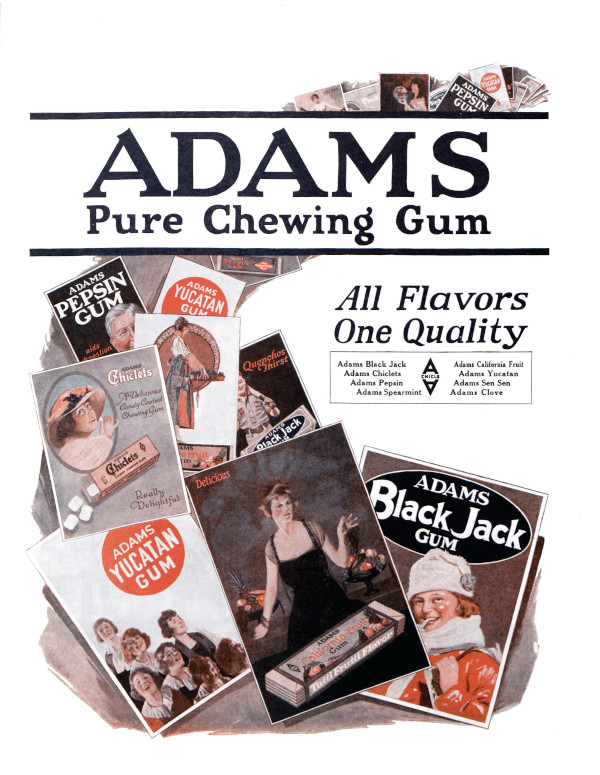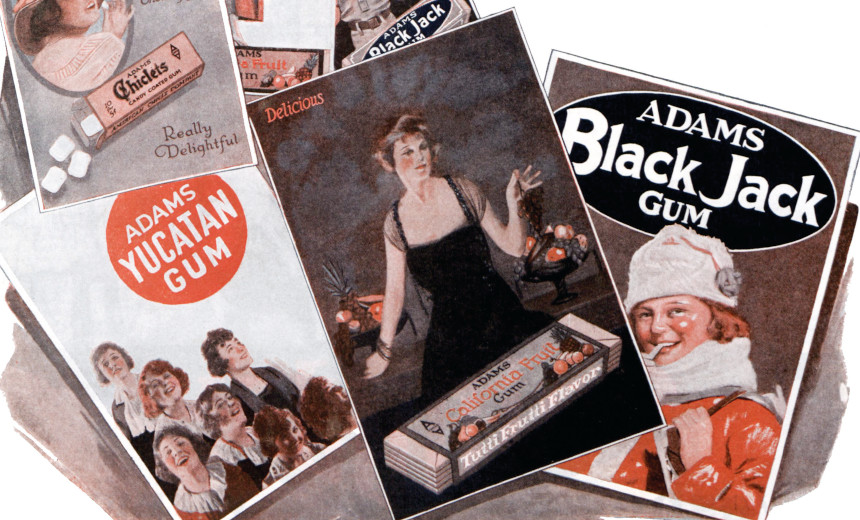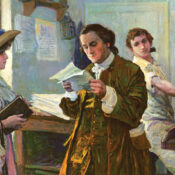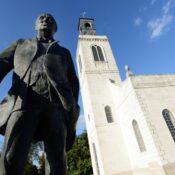America’s chewing gum industry began with the help of a deposed Mexican dictator. In the 1850s, Thomas Adams was secretary to General López de Santa Anna, then living in New York and plotting a return to power in Mexico. Santa Anna had arrived in New York with a boatload of chicle, a latex substance from the sapodilla tree, and the idea of selling it as an inexpensive alternative to rubber. It never caught on with buggy-tire makers, but Adams realized chicle could be made into chewing gum. After purchasing the cargo from Santa Anna, Adams began adding flavorings to the chicle. By 1871, he was selling “Adams New York Chewing Gum” in drugstores. In 1884, he introduced his first big hit: licorice-flavored “Black Jack” gum. In 1899, he introduced the popular Chiclets, as well as the vending machine, from which he dispensed his gum on New York City subway platforms. The Adams company continued production for decades, adding new flavors like Clove and Pepsin. But in the 1970s, declining sales caused the company to cease production. Now owned by the British confectionary company Cadbury, the company is again manufacturing gum and, for older gum chewers, nostalgia.

This article is featured in the July/August 2020 issue of The Saturday Evening Post. Subscribe to the magazine for more art, inspiring stories, fiction, humor, and features from our archives.
Become a Saturday Evening Post member and enjoy unlimited access. Subscribe now




Comments
It says right in the article that the cargo was purchased from Santa Anna. Geez, Mr. “finish the story”, maybe you should finish reading it.
Did Santa Anna get any money. Finish the story next time. Thank you.